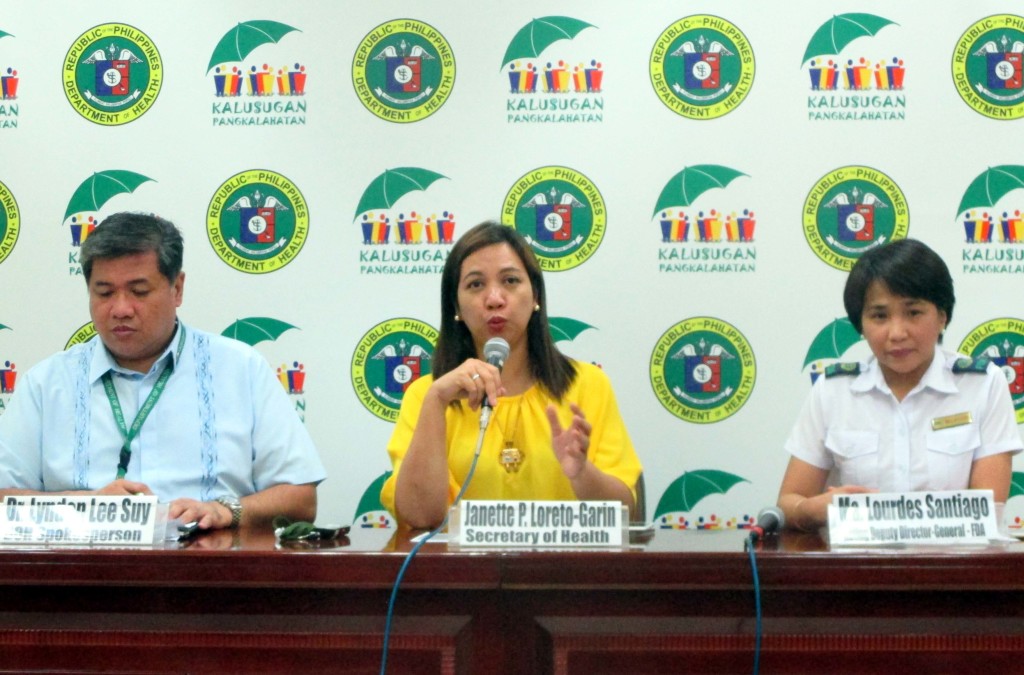
MANILA — The Department of Health (DOH) is looking at possible contamination of chemicals such as pesticide as other cause of food poisoning of about 2,000 school children in Caraga region.
In earlier tests on durian-flavored candy samples consumed by school children in Caraga region, the Food and Drug Administration (FDA) found the presence of “staphyloccus aureus” bacteria.
The candies tested were made by a manufacturer (Wendy’s).
The results of the tests had matched all the manifested symptoms experienced by the 10 to 14 year-old school children who purchased and ate them last week in several towns in Surigao del Sur.
Health Secretary Janette L. Garin said there were still an on-going tests to other flavored candies that had caused food poisoning in Caraga.
“All other tests are on-going. The FDA did not just focus on the presence of the bacteria. They also looked into the presence of other possible chemicals…We are also looking into the aspect of contamination of pesticides…We are waiting for that result,” said Garin.
According to FDA they will make an update as soon as other tests results are finished for other samples of the flavored candies that were taken as samples.
“We initially focused on the samples of durian candies (manufactured by Wendy’s) because that is the one which majority of the patients had consumed,” said Ma. Lourdes Santiago, FDA deputy director general.
Garin admitted that FDA has difficulty of conducting examinations for the other brand of candies that were also pointed earlier as one of the candies that caused food poisoning.
“There were only few samples taken from other brand (referring to durian candy of other manufacturer) which are available for laboratory analysis. With that we find difficulty of checking,” she added.
Garin assured, however, that DOH was still looking into all other angles or possible causes of contamination that led to the food poisoning incidence that affected almost 2,000 school children.
She said that bacterial contamination is also being studied as the main cause because apparently it was traced that manufacturers of both brands were inter-related to each other (meaning they are relatives engaging in the same line of business).
“It is possible that they are doing the same practice in the production usually carried-out by a candy producing manufacturer,” the DOH chief added.
She cited that possible bacterial contamination can happen through the improper handling, preparing and repacking of the food because the one who was engage directly to it can be the possible source of the bacteria itself when no proper practice of hygiene is observed.
She added that bacterial sweats and other dirt not properly washed and present in the body parts of someone engage in the production of a food can contaminate the food.
She added that on that aspect, the owner or the one who manages any food-production business should not forget to practice “proper hygiene” procedure.
“They should remember that they have the responsibility to ensure that hygiene practices are in place because it is in their hands wherein the health of their consumers lies,” she added.
The contaminated food once consumed by a consumer who ate them suffers the consequence of food poisoning.
Signs of food poisoning include dizziness, abdominal pain, vomiting, and diarrheal problems.
That condition when not given early first aid can be fatal if the person losses excessive fluids due to vomiting and diarrheal problems.
The DOH said it was important to immediately bring the patient to the nearest hospital when one was suspected to be food poisoned victim.